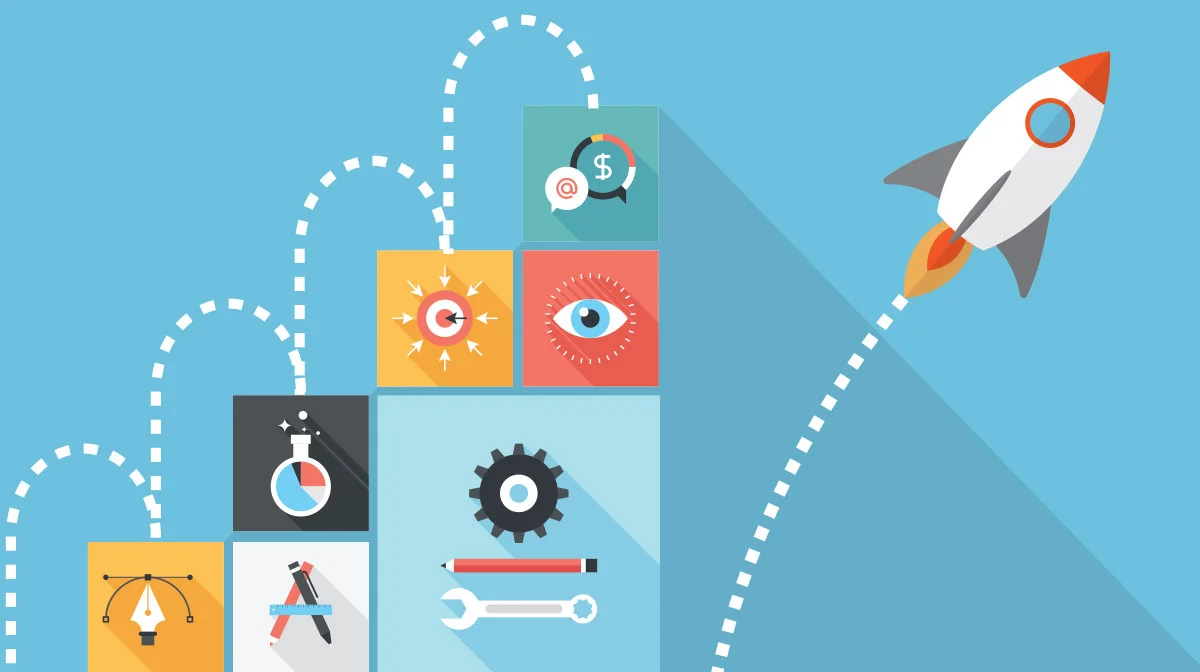5 Reasons Why Understanding your Current Customer Journey is Key to your Digital Transformation
When you receive the mission to design your digital transformation & new customer experience, whatever it is a new challenge or your daily routine, you most probably already have tons of ideas and ambitions, fed by market trends, new technologies, management requirements, success stories, group strategy, …
And this is good, very good. But quite often in organisations, datelines are very short, expectations (and probably fears) very high and it might be tempting to jump directly into the design of the new experience.
But that would be a terrible mistake, especially if you work in a digital transformation team, as you might miss meaningful opportunities by ignoring low hanging fruits or massively investing into fast-fading trends.
This is why I would like to take time to elaborate on the different benefits brought by understanding your current customer experience to create value for both your customers and company but also, to avoid turning your great vision into a lousy execution.
1. Customer Centricity is at the Heart of Digital Transformation
So you need to better understand your customers’ expectations and to be able to put yourself in their shoes when interacting with your company’s current servicing assets.
In terms of vision, this will tell you in which directions to shoot: what needs to be improved, how, in which context. And in terms of execution, it will help you defining where to act in priority to quickly solve major pains, while progressively enhancing elements of your experience to keep timely fitting with their ever-evolving servicing expectations.
In this context, you need to collect actionable customers’ insights, which means to get a clear picture of:
Who they are: what is their age, marital status, income, personal values, attitudes, …
What they want : what is their life triggers, needs, emotions, specific expectations, … at any moment they consider interacting with your company?
How they engage with your company: when, to do what, on which touch points, for which benefits but also, how, why and when do they move from a channel to another?
How they perceive your experience : what are their own experiences, beliefs, feelings every time they interact with your brand but also, what is the word-of-mouth they have been exposed to, from who, on which touch points and regarding which topics?
This could appear as a logical and easy mindset but sadly, in many organisations, this customer intelligence is often decentralised among different departments or, in some others, aggregated within segments or “value buckets”. And this can lead to some misfits, such as focusing most brand servicing efforts on those 20 to 30% of customers delivering most revenues or generating most measurable interactions.
So, this is not a viable strategy anymore, especially in an omni-channel environment.
First, as a negative experience from a low value or unengaged customer can still create as much impact to your brand image than online shaming from a high value customer
And then, because one of the most common marketing objectives is still to keep and grow those (currently lower value or unengaged) customers that you have worked so hard to acquire.
So at this stage, I would rather recommend to build clusters around customers attitudes and behaviours - with a view on the proportion of most valuable customers in each cluster, yes- but with a stronger focus on their key actions, related feelings and expectations by life triggers but also by channels and touch points.
And only then, if this makes sense to your business, it will still be a great idea to level up your servicing for your VIP customers, rewarding them with higher servicing standards and extra miles attention. But this should not be your priority during the analysis stage.
2. You need a more objective eye on your organisation
Aside a deeper knowledge of your customers, you also need to better understand your organisation and more especially, the way customer-facing employees are empowered to deliver the experience.
To do so, you need to meet and interview relevant people in the company to identify all processes and tools – including future projects - related to the customer experience you are busy with. You would be surprised how often in our workshops, participants - even long-time employees- discover both operational incoherencies and projects they had no idea of. My point is, how could you efficiently improve an experience if you don’t know its current pitfalls and potential upcoming solutions?
So, on top of mapping the AS-IS customer journey, I would also recommend to connect the dots with its counterpart, the employee’s journey, to get a deeper view on the experience misfits and their underlying reasons. Is it a pure question of tools or does it also include some human skills, personal attitude, motivation or maybe, the company culture itself ?
Ask yourself and dig further until you understand what are the irritating interactions for your customers, but also for your employees? What is so annoying? When and why are those frustrations emerging? And more importantly, what are the levers for your employees to act upon them? Are those really supporting the achievement of your business objectives? If not, you will need solutions to better support your employees when doing their job.
3. You need to fix the basics of your experience
The concept of digital transformation can sometimes be very confusing. Too often, people fear and refer to “big bang” changes that will disrupt the market and their business model.
If digital trends are most of the time relevant, the first reflex should still be to isolate all the frictions, even the smallest, along the current journey and to fix them before going further and exploring all amazing innovation possibilities.
This may not be the most appealing part of it but how could you provide an outstanding experience through advanced technologies if you cannot even fix the basics of your current paradigm?
Let me give you a concrete example:
In your digital transformation, one ambition is to reduce operational costs by digitalizing bills, monthly payments and first-line support. In this context, it’s quite likely that your company’s website, customer zone and mobile app will become the corner stones of many customer interactions.
But, after analyzing the situation, you have observed 3 major pains:
a low adoption/ usage rate of the customer zone and mobile app
a lousy and very time- consuming login process
a lack of value for customers, due in this case to basic features and benefits in the logged-in experience
What should be your priority then? To invest in a massive communication campaign to promote the (few) benefits of your mobile app? To increase value for customers using a chatbot and a few extra trendy features? Or starting with the basics and fix the bloody login process that is turning off even your bravest customers?
4. You need to understand where and how you can create impact and value
So, now that you have a clearer understanding of the current experience and pitfalls and that you have already spotted and established the basic improvements to undertake, you can finally start inventing your best in class future experience.
How? By confronting your smoothened current experience to several insights:
Your business objectives: what are the goals you need to achieve with this revamp? What do you need to do so? And on which step of the current journey do you specifically need to act
Your customers: Which of their biggest needs and expectations can you fulfill to motivate them to interact differently with your company? How can you provide enough relevant added- value? On which channels?
Your competition: What can you learn from them? What do they do better? Does it provide results? Would it make sense for your brand? What could you “steal with pride”?
Your employees: How can you solve their frustrations and empower them to be more customer oriented? Or in other words, how can you provide them with more time, better information, relevant intelligence, new skills, higher autonomy, … to better serve your customers?
Your partners: If your organization is collaborating among an existing network, is there any extra service (or partner) that could help to provide your customers with a better experience?
Your trends aka new technologies and servicing concepts: Last but not least, what are those technologies and concepts used and praised by your customers, employees, competitors and trends watchers that could enhance both your experience and customer journey? What would be their benefits? How do they appeal to your customers? How do they support your brand positioning?
Here, we reach the point where you actually start brainstorming about your new customer journey. So, if you need advices about how to design it, you can still go back to step 6 of my previous article: “7 steps to design an actionable CJ”
5. You need to justify your choices to your management
Whatever your position in the company, you will most probably need to update your management and/ or steering committee on the directions taken during this exercise.
In my humble opinion, it is always easier to start with an audit of the current situation. Most board members are dealing with tons of information and decisions to make, so they won’t have time to participate to all internal meetings and brainstorming exercises. On top of that, they often have a transversal view of the company challenges but probably not of the specific pitfalls and organisational failures met in the day-to-day.
And quite often, they further expect coherency with the current situation and a smooth transition to the new paradigm. In this context, they need to understand how your efforts will take place within the current investments of the company: the current resources that you can already use and the complementary to consider in the future.
The AS-IS customer journey is the perfect tool to present the key actions to undertake. It will help them to visualize the end-to-end journey and to validate your thoughts on the different steps and elements to improve to achieve your business objectives while providing better value for your customers. It will also allow you to discuss priorities and to get their agreement to further explore the different options you are considering.
So, what do you think?
As always, I am interested in your feedback. So, whatever is through comments, email or face-to-face chit chat, never hesitate to contact me.
About the author
Amélie has been active in the digital strategy field since the last 12 years and during that period has consulted for a wide array of sectors: Beauty, insurances, transport, banks, energy, automotive, FMCG, Telco, Food retail, NGOs... she uses the diversity the challenges and solutions she examined to think cross-industry and doesn't hesitate to apply best practices and solutions from one industry to another.
During the same period she has extended her experience and capabilities applies her digital thinking to marketing strategy, product portfolio design and has become one of Belgium's key strategists in terms of omni-channel customer experience design.










Each year, around Christmas, I have fun reading the predictions for the following year, and, depending on what I read, my mood balances between amusement, doubt, glee or even sometimes anger. In 15 years of experience in digital, I have seen the “hype cycle” of Gartner evolve through time, right or wrong, too optimistic or too pessimistic. But its easy to criticise and never do the exercise - so this year, it’s my turn to dip my toe into it and we’ll see in the coming years if I was right or wrong.